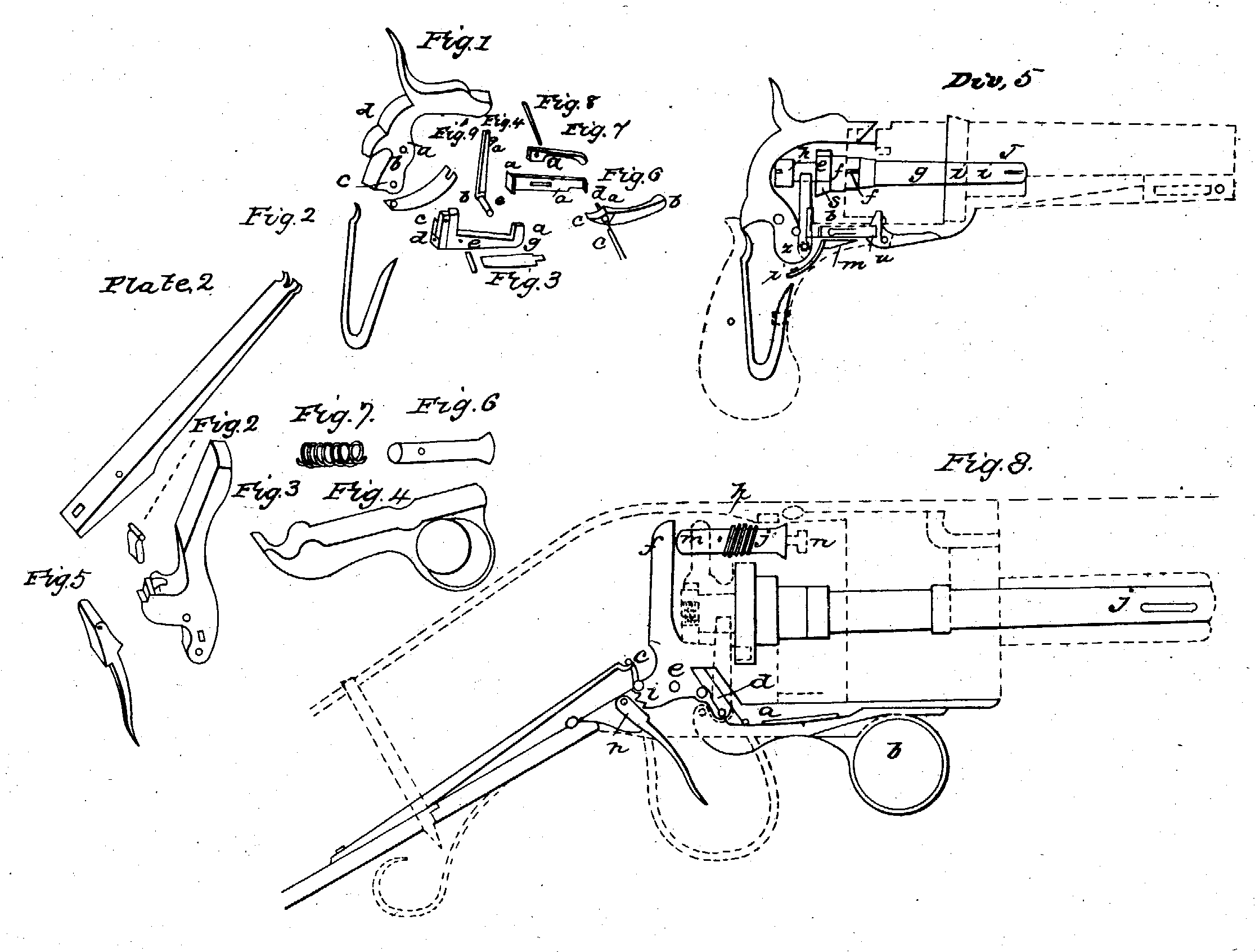【Watch I was dragged into prison by my ex】
All the Parts Combined
On Language

Diagram from the Colt Revolver patent, 1836
178 years ago today, in 1836, Samuel Colt was granted a U.S. patent for his revolver, which he called “a new and useful Improvement in Fire-Arms,” those most brutally useful of devices. As EDN (Electrical Design News) noted last year, Colt’s design “was a more practical adaption of Elisha Collier’s earlier revolving flintlock. It included a locking pawl to keep the cylinder in line with the barrel, and a percussion cap that made ignition more reliable, faster, and safer than the previous designs.” (This is much more edifying when you learn what a pawlis: “a pivoted curved bar or lever whose free end engages with the teeth of a cogwheel or ratchet so that the wheel or ratchet can only turn or move one way.”)
If you can refrain from asking yourself what sort of man would want to invent a more efficient killing machine, Colt’s patent is worth reading, or at least skimming, for the sense it gives of technical writing in the mid-nineteenth century: it’s a strict, unvarnished account of how a thing works, surprisingly direct in its syntax, and full of great machine-age terms like pawl, arbor, shackle, ratchet, and mainspring. Today, when technical writing is a muddle of jargon and pleonasm, it’s pleasing to see how accessible this patent is—all the more so because it’s such a famous invention. Granted, this isn’t scintillating reading by any stretch of the imagination, but if you sat down with a tall urn of coffee and summoned your very best self’s powers of concentration, you could actually learn how to craft and operate a fucking gun.
Take this sentence, for example: “Fig. 9 is a spring, which holds the rod, Fig. 5, toward the hammer, that the connecting-rod may catch in a notch at the bottom of the hammer to hold it when set.” See? Lucid, if not limpid. In other places, the simple declarative sentences accrue in rapid sequence, achieving an almost poetic cadence, or at least an admirable degree of compression:
Fig. 1 represents the mainspring. Fig. 2 is the stirrup to connect the mainspring with the hammer. Fig. 3 is the hammer. Fig. 4 is the lever for setting the lock. Fig. 5 is the discharging-trigger. Fig. 6 is the adopter. Fig. 7 is the spiral spring to draw back the adopter. Fig. 8 represents all the parts combined.
Compare that simplicity to the language of more contemporary patents, such as this one, for a “remotely operable machine gun charging apparatus,” granted last year:
Positional information with respect to the hook member 82 is generated by the forward and rearward switches 136 and 138 which are schematically depicted in phantom in FIG. 3A. When the hook member 82 is in its forward “armed” position, a bottom side portion of the stage structure 74 depresses the forward switch 136 which responsively transmits a position confirmation signal 156 to the armament control panel 132 and also causes the forward position indicator light 144 thereon to be illuminated.
Patents see language in its most utilitarian form. There’s a part of me—and I realize I may be quite alone in this—that’s captivated by the precision demanded of technical writing; this part of me could stand to read the stuff for hours. I can see myself, in old age, amassing a collection of, say, old radar systems manuals and reading them in my easy chair until I nod off. Such writing tends to bristle with potent nouns, all of them carefully calibrated, intensely compound, and entirely free of emotional valence. “Forward position indicator light.” “Position confirmation signal.” “Armament control panel.”
The appeal in this sort of thing, if you don’t see it, is summed up in of one of my favorite DeLillo quotations, a somber but delirious compilation of high-impact nouns from his short story “Human Moments in World War III”:
As the surface features unfurl I list them aloud by name. It is the only game I play in space, reciting the earth names, the nomenclature of contour and structure. Glacial scour, moraine debris. Shatter-coning at the edge of a multi-ring impact site. A resurgent caldera, a mass of castellated rimrock. Over the sand seas now. Parabolic dunes, star dunes, straight dunes with radial crests. The emptier the land, the more luminous and precise the names for its features. Vollmer says the thing science does best is name the features of the world.
Search
Categories
Latest Posts
The Most Disappointing PC Games of 2017
2025-06-25 23:07Watch Kevin Bacon and Jimmy Fallon sing Tom Petty's 'Free Horses'
2025-06-25 22:50Merry Christmas! We put Gritty in a bunch of holiday classics
2025-06-25 22:31Huawei teaser image suggests a phone with a 'pinhole' notch
2025-06-25 22:11The People’s Platform Goes to Washington
2025-06-25 21:26Popular Posts
The Permanent Vactioner
2025-06-25 23:35A deep dive into Apple's 'sweetheart deal' with Ireland
2025-06-25 22:58This man's query about a 47
2025-06-25 22:44Samsung's Galaxy S10 is shaping up to be extremely feature
2025-06-25 22:23Our Refugees
2025-06-25 21:27Featured Posts
Dreams Deferred
2025-06-25 22:20"Hey Siri, OK Google" on iOS will now open the Google Assistant
2025-06-25 21:49This person's 45
2025-06-25 21:30The Speaker and the Ironworker
2025-06-25 21:26Popular Articles
The Cambridge Analytica Con
2025-06-25 23:53Netflix turns to children's lit, adapting popular Roald Dahl stories
2025-06-25 23:40'Game of Thrones' star Lena Headey shares crucial behind
2025-06-25 22:50Malls and movies and drones, oh my.
2025-06-25 22:29Newsletter
Subscribe to our newsletter for the latest updates.
Comments (8458)
Speed Information Network
The Destructive Character
2025-06-25 23:44Fashion Information Network
Facebook's election 'war room' is now empty
2025-06-25 23:14Openness Information Network
Christine Blasey Ford will donate remaining GoFundMe money to help trauma survivors
2025-06-25 22:34Dream Information Network
The MarCO cubesat says goodbye to Mars with photo of the red planet
2025-06-25 21:43Star Sky Information Network
NYT Connections hints and answers for May 24: Tips to solve 'Connections' #713.
2025-06-25 21:26